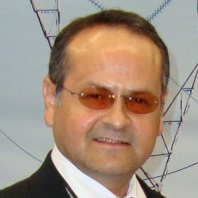Control Schemes for Wind Electricity Systems
A special issue of Energies (ISSN 1996-1073). This special issue belongs to the section "A3: Wind, Wave and Tidal Energy".
Deadline for manuscript submissions: closed (31 January 2020) | Viewed by 27487
Special Issue Editor
Interests: stability and control of power grids with mixed generation; wind turbine/wind farm control; vsc-hvdc transmission
Special Issues, Collections and Topics in MDPI journals
Special Issue Information
Dear Colleagues,
Wind electricity systems are complex and involve numerous components arranged in subsystems that have different control objectives and modelling and performance requirements over a broad range of timescales. With the development of large onshore/offshore wind farms and the attainment of high wind power penetration, it is no longer satisfactory for wind farms to be passive providers of generated power. Instead, they must become virtual generation plant that behaves similarly to conventional generation plant. The power generated by the wind farm and its wind turbines can no longer simply be that dictated by wind speed. The power must be adjusted as required by the Transmission System Operators (TSOs). To do so requires flexible operation of the individual turbine and a wind farm controller to maximise wind farm-generated power and provide ancillary services, including curtailment, frequency support, and voltage/reactive power support, and minimise O&M costs.
This Special Issue aims to gather new knowledge on control schemes for wind electricity systems to optimise the utilisation of these expensive assets, thereby assisting to reduce the cost of energy. Topics of interest for publication include:
- Wind farm models for control design purposes;
- Wind turbine/wind farm control for
- loads mitigation
- power production maximisation
- Grid Code compliance and provision of ancillary services;
- Control of HVDC for large offshore wind integration;
- Control systems for floating wind turbines;
- Control systems for multi-rotor wind turbines.
Prof. Olimpo Anaya-Lara
Guest Editor
Manuscript Submission Information
Manuscripts should be submitted online at www.mdpi.com by registering and logging in to this website. Once you are registered, click here to go to the submission form. Manuscripts can be submitted until the deadline. All submissions that pass pre-check are peer-reviewed. Accepted papers will be published continuously in the journal (as soon as accepted) and will be listed together on the special issue website. Research articles, review articles as well as short communications are invited. For planned papers, a title and short abstract (about 100 words) can be sent to the Editorial Office for announcement on this website.
Submitted manuscripts should not have been published previously, nor be under consideration for publication elsewhere (except conference proceedings papers). All manuscripts are thoroughly refereed through a single-blind peer-review process. A guide for authors and other relevant information for submission of manuscripts is available on the Instructions for Authors page. Energies is an international peer-reviewed open access semimonthly journal published by MDPI.
Please visit the Instructions for Authors page before submitting a manuscript. The Article Processing Charge (APC) for publication in this open access journal is 2600 CHF (Swiss Francs). Submitted papers should be well formatted and use good English. Authors may use MDPI's English editing service prior to publication or during author revisions.
Keywords
- wind power
- wind energy conversion systems
- wind turbine control
- wind farm control
- pitch control
- fatigue loads
- torque control
- maximum power point tracking
- power electronic converter
- HVDC
- ancillary services
- grid code compliance
- frequency control
- voltage control
- fault-ride through
- reactive power control





